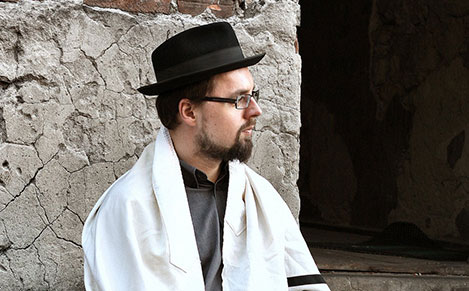Thoughts on parashat Chukat.
“The limits of my language mean the limits of my world,” said Ludwig Wittgenstein, an Austrian-British philosopher of Jewish origin. Very true: it is often the case that we cannot truly understand a phenomenon until we have a linguistic representation. Only when we find language to describe something does the phenomenon become clear. We can also be deceived by language; finding the new language can give you the illusion of finally understanding a given phenomena, but in some cases it can actually obscure our image of things, unknowingly confuse us and thus make understanding even more complicated.
The Torah portion for this week also deals with something obscure. It is not a phenomenon, nor a matter of language, but that of a ritual: one of the most mysterious rituals in the Torah – the Red Heifer, the ashes of which purify a person who has been contaminated by coming in contact with a dead body. Strangely, whoever is involved in the procedure of preparing this ritual, and in the process comes in contact with the ashes of the red cow, then himself becomes ritually impure and remains so until the end of the day. Our Sages saw this practice as one of the matters which even the wisest men failed to fathom:
“This is the statute of the Torah”. R. Isaac opened with the text: “All this I have tried (to fathom) by wisdom; I said, I will get wisdom; but it was far from me” (Kohelet 7:23). Thus spoke Solomon: I succeeded in understanding the whole Torah, but, as soon as I reach this chapter about the Red Heifer, I searched, probed and questioned, “I said, I will get wisdom; but it was far from me” (Yalkut Shimoni 759)
The meaning of this ritual is beyond human comprehension and it is an illustration of how the Torah can be beyond human comprehension. This means that it exceeds human reason and that reason should not be used as ‘a judge’ regarding truthfulness or validity of the Torah and her laws. Not only talmudic rabbis, but also many prominent rabbis of later times, like Vilna Gaon or Tzvi Elimelech of Dinov, expressed the incomprehensibility of this ritual.
This view is grounded in the text of the Bible itself:
This is the statute of the Torah which the Lord has commanded, saying, Speak to the children of Israel, that they bring thee a red heifer without defect, in which there is no blemish, and upon which never came a yoke (Numbers 19:2)
This is the statute of the Torah: zot chukat ha’Torah, so the laws regarding the Red Heifer belong to the chukim. Traditionally, chukim are Torah laws that seemingly have no rational explanation, such as the prohibition to wear shatnez – forbidden fabric mixtures (e.g. wool and linen.) Mishpatim, however, are laws whose reasons are understandable and completely ‘make sense.’ Examples include the prohibition of stealing or of taking bribes. These are laws that any normal and decent society would enact and, in fact, defend.
There were, however, attempts to explain the part of the Torah concerning this ritual in a rational way. Joseph Bechor Shor a 12th century rabbi, exegete and poet adopts a comprehensively rational explanation:
The rites pertaining to the Red Heifer were designed to discourage association with the dead, prompted by the bereaved love for the departed, and excessive grief. Alternatively, that people should not make a practice of consulting the dead or familiar spirits, the text pronounced the defilement of the dead person as more contaminating than all other defilements, making it the prime source of uncleanliness, defiling both man and vessels and defiling as well through overhanging (ohel).
Also on account of human respect, people should not come to use human skin for coverings and human bones for articles of use just as we use the skin of animals; it is disrespectful of humanity. Our Sages made a similar point (Hullin 122a): “Why has the skin of a corpse been declared unclean? That a person should not use his parent’s skin for coverings.” The greater the love, the greater the defilement. The text likewise went to the strictest lengths in its requirements, demanding the ashes of a red heifer which are an expensive item.
Putting aside all the darkness of this explanation, its meaning is the following: don’t come in contact with a dead body, because if you do you will have to use the ash of the extremely rare, and expensive, red heifer to cleanse yourself.
While this explanation makes sense it does not explain all the strange details of the rite nor why the substance used for the ritual cleansing, IN ITSELF, has a contaminating power. Nevertheless, Shor broadens our understanding of the text, giving us a new perspective … a new language… to talk about the Torah and her laws.
Rational explanations in many spheres of human intellect and experience are not always completely satisfactory, but for lack of better explanations we must rely on the ones we have until one of us has a superior or more comprehensive interpretation. It teaches us humility both intellectually and in life in general, which has many positive effects. Awareness of our limitations protects us from arrogance and its mistakes, and, more importantly, humility stimulates our development, motivating us to work, to make more effort, think, learn and comprehend.
On the other hand, Shabbat is a day when we savor the fruits of our work and our efforts.
Shabbat shalom!

